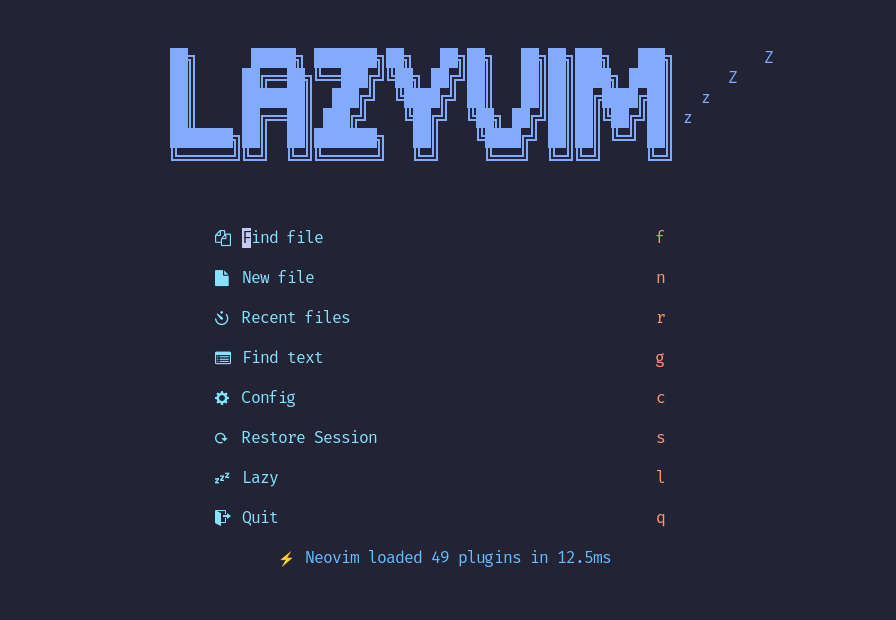5.2 KiB

Install · Configure · Docs
LazyVim ist ein Neovim setup aufgebaut auf 💤 lazy.nvim. Es erleichter das Anpassen und erweitern von Ihrer Konfiguration. Anstatt von vorne anzufangen oder eine vorgefertigte Distro zu verwenden, gibt LazyVim das beste aus beiden Welten - die Flexibilität Ihre Konfiguration zu verändern und einzustellen wie Sie es wollen und die Einfachheit von einem vorgefertigten Setup.
✨ Features
- 🔥 Transformiere dein Neovim in eine komplette IDE
- 💤 Passe deine Konfiguration einfach an und erweitere diese mit lazy.nvim
- 🚀 Extrem schnell
- 🧹 Logische Voreinstellungen für optionen, autocmds und keymaps
- 📦 Kommt mit einem Haufen vor Konfigurierten, ready to use Plugins
⚡️ Vorraussetzungen
- Neovim >= 0.8.0 (gebraucht um mit LuaJIT zu bauen)
- Git >= 2.19.0 (um Teil-Klone zu unterstützen)
- eine Nerd Font (optional)
🚀 Einstieg
Sie können eine Startvorlage für LazyVim hier finden
Versuchen Sie's mit Docker
docker run -w /root -it --rm alpine:edge sh -uelic '
apk add git lazygit neovim ripgrep alpine-sdk --update
git clone https://github.com/LazyVim/starter ~/.config/nvim
cd ~/.config/nvim
nvim
'
Installieren von LazyVim Starter
-
Neovim Files sichern:
mv ~/.config/nvim ~/.config/nvim.bak mv ~/.local/share/nvim ~/.local/share/nvim.bak -
Den Starter Klonen:
git clone https://github.com/LazyVim/starter ~/.config/nvim -
Den
.gitFolder löschen, um die Konfiguration zu einer eigenen distro hinzuzufügen:rm -rf ~/.config/nvim/.git -
Neovim starten!
nvimRefer to the comments in the files on how to customize LazyVim.
📂 File Structure
The files under config will be automatically loaded at the appropriate time, so you don't need to require those files manually. LazyVim comes with a set of default config files that will be loaded before your own. See here
You can add your custom plugin specs under lua/plugins/. All files there
will be automatically loaded by lazy.nvim
~/.config/nvim ├── lua │ ├── config │ │ ├── autocmds.lua │ │ ├── keymaps.lua │ │ ├── lazy.lua │ │ └── options.lua │ └── plugins │ ├── spec1.lua │ ├── ** │ └── spec2.lua └── init.toml
⚙️ Configuration
Refer to the docs








